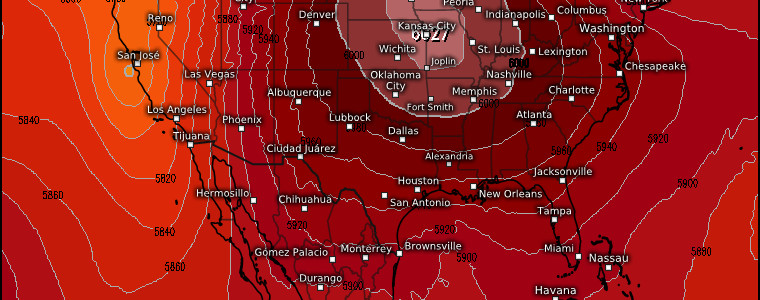
August Scorcher
Now that what’s left of Hilary is well inland and speeding off to the north, we turn our eyes to the next big weathermaker: a very strong, large ridge.
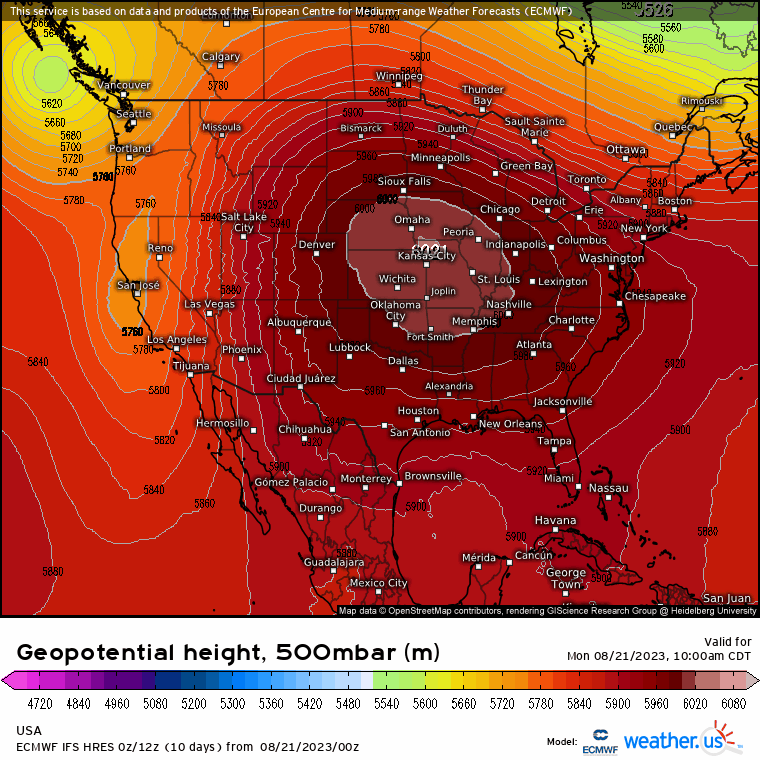
This ridge moved into place over the weekend and is already breaking records. From high temperatures to outrageous “feels like” temperatures to a record-breaking mid-level height, it already has been and will continue to be a big deal for a lot of people.
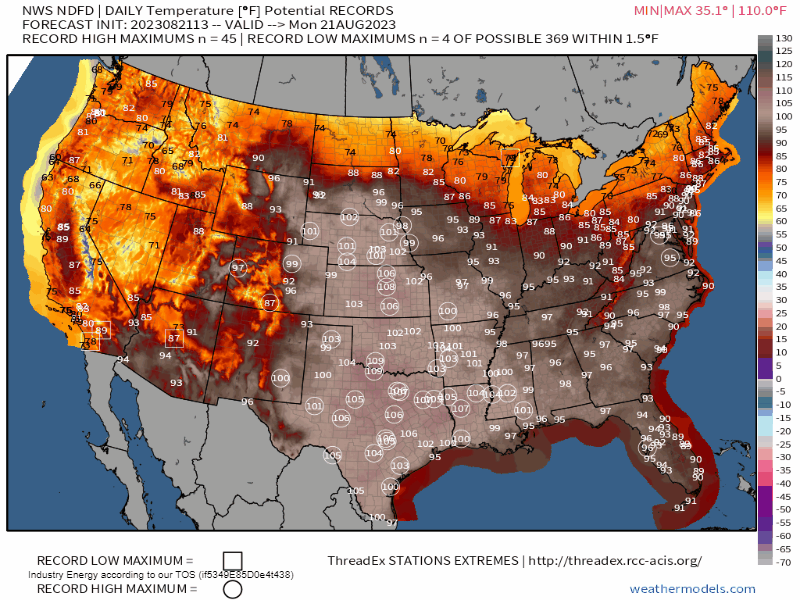
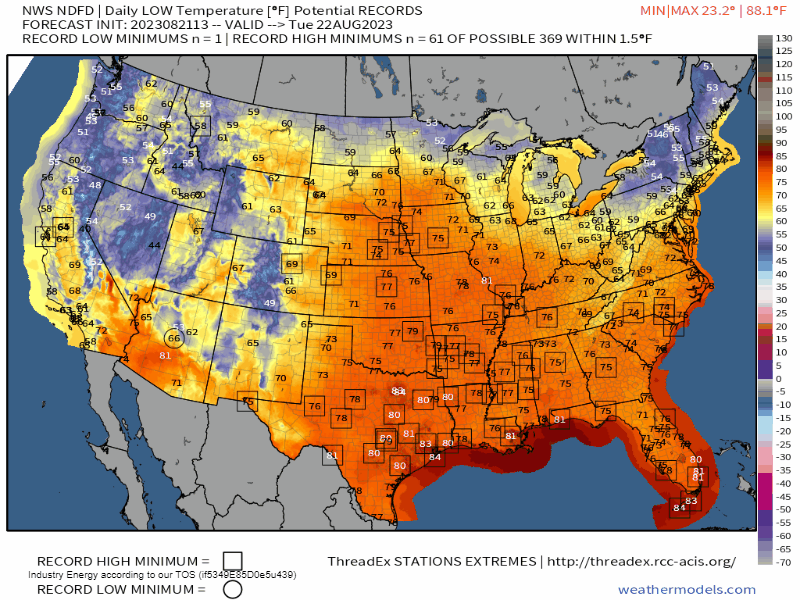
Air temperatures will continue to soar near/into the triple digits for many from the Plains to the Great Lakes to the Southeast through Friday, likely smashing quite a few records. Additionally, nighttime lows will fail to dip below the mid-70s for many, making it harder for the body to reset from the day’s heat.
And, since humidity is naturally higher east of the Rockies, dew points in the 70s and even 80s will facilitate dangerous “feels like” temperatures.
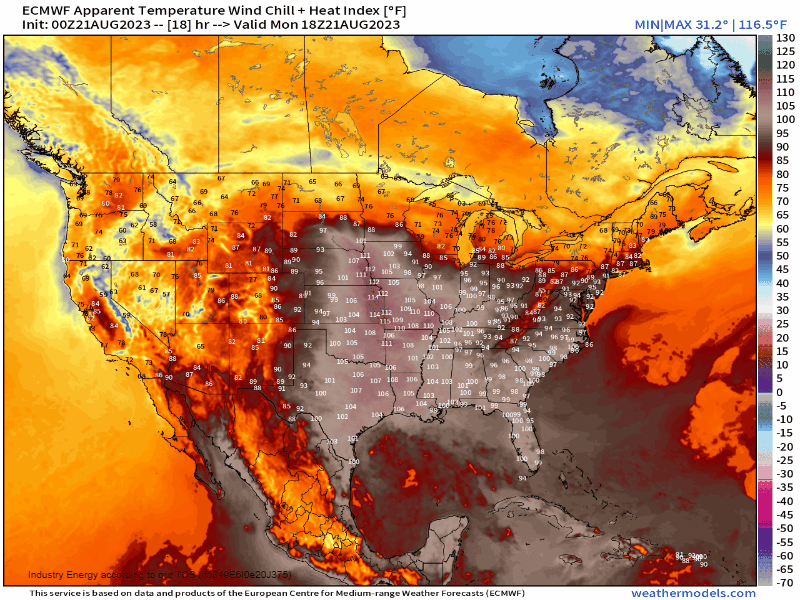
Widespread forecast heat indices of over 105 degrees have triggered the issuance of Excessive Heat Warnings that stretch from Southern Minnesota to Southern Texas and Louisiana. These will likely persist and shift eastward some as the week wears on and the ridge adjusts south and east slightly.
As a reminder, an excessive heat warning is issued when heat index values are forecasted to meet/exceed 105 degrees. This can vary a little depending upon the region and their average climate.
Whether or not your region is under a warning or an advisory, this heat wave has the potential to be dangerous. I strongly urge anyone in the regions in question to spend less time outdoors/in the sun, drink plenty of water, keep as cool as possible, and check on your friends/family to make sure they are doing the same.
Also, keep in mind the symptoms of heat exhaustion/heat stroke:
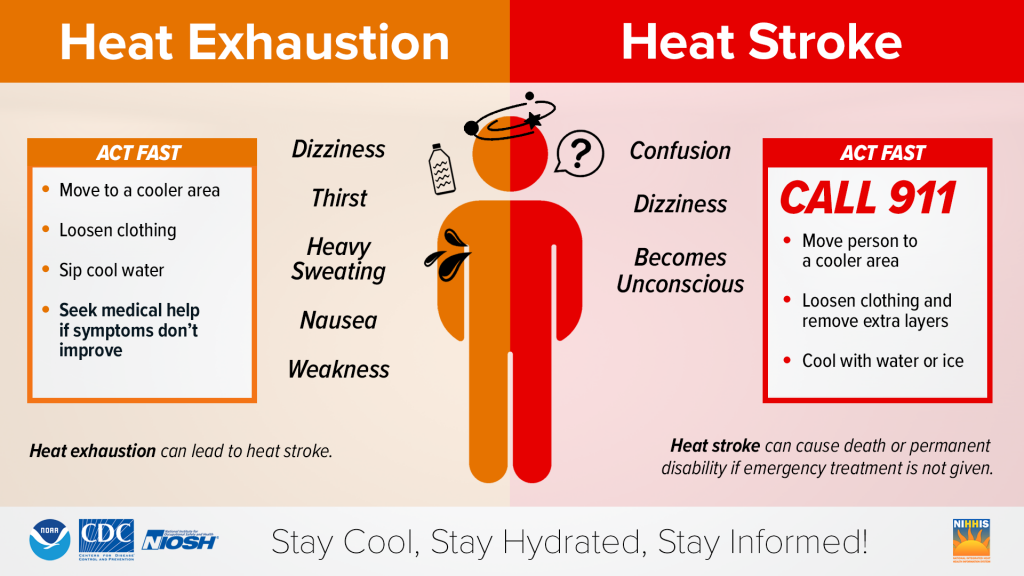
It is important to recognize any symptoms quickly and treat them before it becomes deadly. Remember, heat kills more people annually than any other weather-related hazard.
While the bad news is that this heat will be with us much of the week, there is some good news:
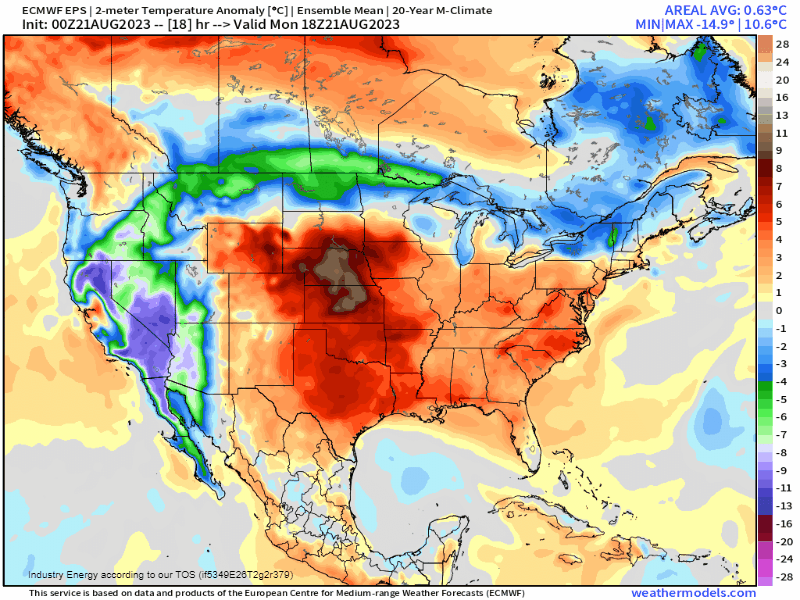
Closer to the weekend, troughing will begin to work its way in from the northeast. A cold front will move through, dropping temperatures (for some) to slightly below average.











